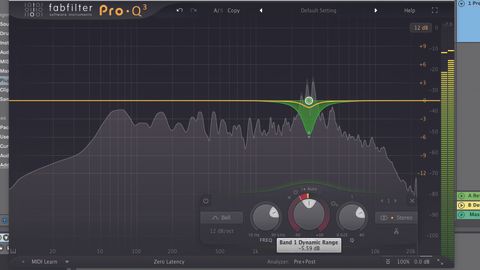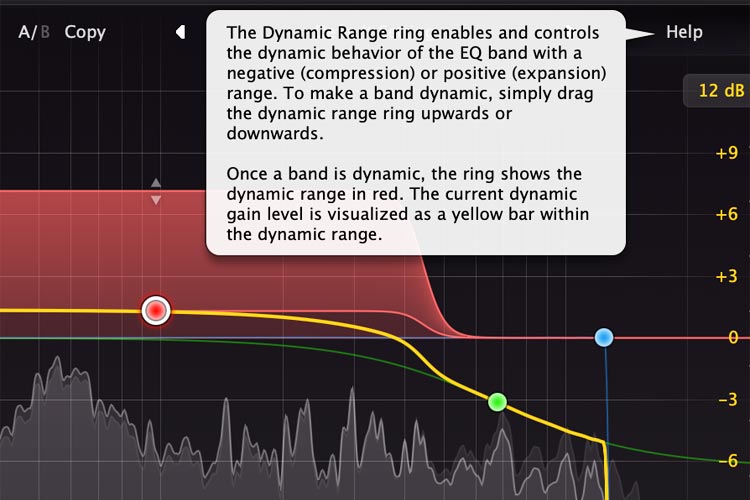

This alone is worth the price of admission. SOLO TIP 1) The Q can be varied by holding down CMD on a mac. This example shows a standard bell with 6 dB/oct sides and the bathtub 96dB/oct shapeĮach individual band can be solo’d, so you can hear the effect of varying the Q as well as the frequency. This is a very useful shape in post production for removing noise floors between useful frequencies. If you select a band with a bell, you can turn it into the “bathtub shape” (a bell with 96dB/Oct slopes) by shift alt clicking on the band (see below).

The display only gets as busy as you need it to be, and is infinitely flexible.īAND TYPES TIP: I learned this tip from Re-Recording Mixer John York. In reality, all bands are always there, but you only see them in the plug-in when you require them by tapping your cursor on the line to add a band, which leads to a very un-cluttered feel. You can add bands on the fly as you wish – everything is of course fully automatable (a must in post). Light Blue High Shelf (from 6dB to 96 dB/oct) Yellow Band Pass (from 12dB to 96 dB/oct) Red Notch (from 12dB to 96 dB/oct), Q from 40 (v tight) to 0.025 (v wide)

See example here of all the 8 different types available put in at once for illustration (don’t try this at home kids – it will sound mighty weird):ĭark Blue Low Cut (from 6dB to 96 dB/oct) The current band (and therefore the attentioned band with its pop up window and rotary controls) has a white highlighting circle around it. Each band can be any sort of band from the following list: Low Shelf, Low Cut, Notch, Band Pass, Bell, High Shelf, High Cut. Pro Q2 has up to 24 bands of EQ available per plug-in. In post production we can often end up with complex multi band eq with many notches to remove rumbles, camera noise, lighting whine and hiss, as well as bands to correct for mic placement, or to balance the difference in mic placement between camera angles etc. Colour is a very useful way of attracting and focusing sensory information, as users of the Avid S3 and S6 are learning. The first thing that attracted me to this plug-in was the GUI, it’s clean & crisp, uncluttered and with very good use of colour.
#Fabfilter pro q 2 manual software#
There are plenty of reviews of this software out there, so I will concentrate on what sets this plugin apart as top grade wheat and not audio chaff, and why I was such an early adopter, and why (in my humble opinion) you should be adding it to your template too!Ģ4 Bands with 8 types of EQ Per Band! (yes you read that right)!
#Fabfilter pro q 2 manual windows#
Windows 32-bit: Windows 10, 8, 7, Vista or XP Windows 64-bit: Windows 10, 8, 7 or Vista So opening gambits of superlatives from me aside, it’s available as VST, VST3, Audio Units, AAX Native and AudioSuite formats (all both 64-bit and 32-bit), as well as RTAS (32-bit only). Pro Q2 is probably one of the most insanely flexible, beautiful looking, best sounding and fully featured EQ plugins on the market today. None of the available software instruments met their high quality standards of sound or design, so they built their own. They loved the sound of old analog gear but were familiar with new software synthesis developments. FabFilter Software Instruments was founded in 2002 by two Dutch MSc musician/engineers, Frederik Slijkerman and Floris Klinkert.


 0 kommentar(er)
0 kommentar(er)
